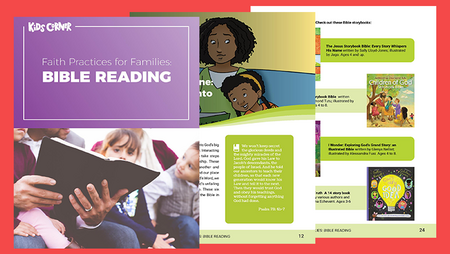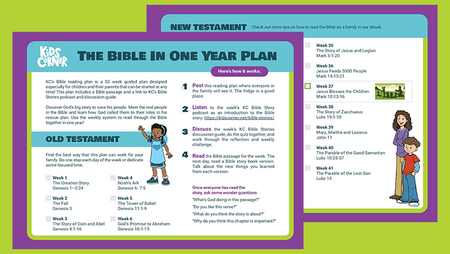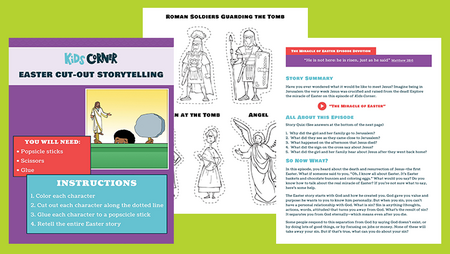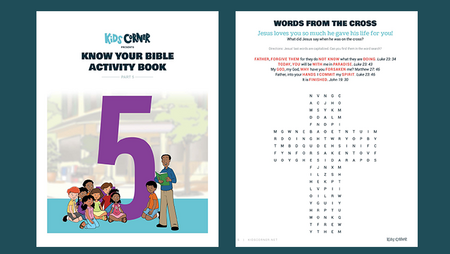
How To Read the Bible With Your Children
Bible Verse
8 Write down copies and tie them to your wrists and foreheads to help you obey them. 9 Write these laws on the door frames of your homes and on your town gates. Deuteronomy 6:8-9
In this week’s children’s devotion we talked about why it’s important for us to see and interact with God’s Word everywhere and all the time. It helps us get to know God better and fall in love with him and his story. That’s what reading the Bible is all about. But where should we start? Which book should we read first? And what does reading the Bible look like anyway?
With my kids, I follow the Five Ps of Bible Reading: Pick a Passage, Pause, Ponder, Pray, and Participate.
Pick a Passage
The first step is to pick a passage. You could do this on your own, but you can also involve your kids in this process. If you’re not sure how to pick a passage, here are a few different ways:
Start with the Gospel of Mark. This will introduce your children to Jesus’ ministry as the foundation for the Bible and to God’s ultimate love for them.
Pick a theme. Most recently, my family looked at Scripture verses that related to each of the Fruit of the Spirit.
Ask your child what they’re interested in, and pick something that’s related. For example, my four-year-old loves snakes, so we’ve read about the Garden of Eden many times. Perhaps your child loves sports. In that case you could start with one of the passages about running a race.
Find a premade reading plan (like this one about Jesus’ miracles, or this one about God’s promises) to follow.
When you’re picking a section to read, don’t forget to take your children’s attention spans into consideration. It’s okay if it takes you a long time to make it through the Bible because you need to choose shorter passages. While I may sometimes read 20 verses with my kids, more often it’s closer to five or 10, and sometimes it’s just one.
Pause
Before we start reading the Bible, we stop for a moment to prepare ourselves. We use a short practice where we say, “Let’s calm our heads, our hearts, and our hands, as we breathe in and out.” Do what works for you. Maybe you pray and ask God to prepare your hearts to receive his message.
Ponder
After you’ve read a passage, take a moment to think about what you read. Where do you see God the Father and Jesus in this story? Sometimes they’re easy to spot, like when God talks to Moses from the burning bush. Sometimes they’re harder to find. But they are always there, and these questions can help you find them.
What did God do in this passage?
What did God say in this passage?
What is he doing in the hearts of the people that we are reading about?
In this passage, what can we learn about who God is?
I also find it helpful to ask my boys if there is anything they didn’t understand. While reading about the Fruit of the Spirit, we encountered the phrase “bearing with one another” (Ephesians 4:2). We had to spend some time talking about what that meant.
The other question I ask is, “How can you apply this message to your life?” Not every Bible story will directly apply to our kids’ lives, but it’s important for us to draw attention to the passages that do.
Just like Moses wanted the Israelites to see God’s Word as many times as possible, it’s important for us to encounter the same passages many times so we learn them by heart. How can you and your family see this story a second time? Maybe use a story book version, a Kids Corner audio Bible story, or a different translation.
Pray
After we’ve talked about the passage, we pray about what we read and what we learned. For example, we have said, “Heavenly Father, thank you for loving us with a true love like the one in 1 Corinthians 13. Please help us to love others this way.”
Participate
Finally, Deuteronomy 6:6-9 calls us to participate in scripture. While we probably aren’t going to “tie them as symbols on [our] hands and bind them on [our] foreheads” (Deuteronomy 6:8), we can impress his words “on [our] hearts” (Deuteronomy 6:6) in many ways:
Craft - Using different verses and stories, we can paint pictures, build lego scenes, and make puppets.
Sing - We can sing songs that were inspired by the Bible. We can even make up our own songs.
Act - Act out the passage as a family member reads the story.
Play - Try kicking a soccer ball around or jumping rope as you memorize verses.
Brainstorm what your children’s interests are and find good ways to impress God’s Word on their hearts.
To help your family create a plan and a space for Bible reading, check out two new resources from Kids Corner: Faith Practices for Families: Reading the Bible and The Bible in One Year Plan.
Want to do a deep dive? Check out Family Fire's article Six Steps to Inspiring Spiritual Growth in Your Family.







